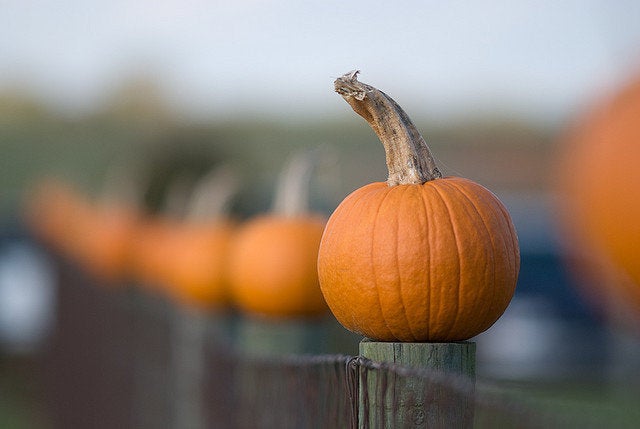
Bobbing for apples is one of the silliest games played by humans, and I won't glorify it by describing its rules (if any) here. But it does raise the compelling scientific question, "Why do some fruits float and others don't?"
On the "Late Show With David Letterman," a pair of attractive models used to drop various objects into a tank of water after Dave and sidekick Paul Shaffer had speculated about whether they will sink or float. Unfortunately unable to recruit the models, I decided to play "Will It Float?" on my own.
I went to the supermarket and, to the dismay of the cashier, I purchased one each of a variety of fruits and vegetables. Back home, I filled the kitchen sink with water and, humming my own rendition of Shaffer's fanfare, dropped them one by one into the water and recorded the results in my laboratory notebook.
Here, then, revealed for the first time in the annals of gastronomic science, are the results of my research:
Floaters: apple, banana, lemon, onion, orange, parsnip, Bartlett pear, pomegranate, rutabaga (barely), sweet potato (barely), zucchini.
Sinkers: avocado (barely), mango, Bosc pear (barely), potato, cherry tomato.
Almost all of my experimental subjects had difficulty making up their minds as to whether they wanted to sink or float. That's understandable, because they are all made mostly of water; their edible portions, or fleshes, range from 73 percent to 95 percent water, while their skins and seeds don't amount to much additional weight. They would therefore tend to stay pretty much suspended. In fact, as indicated above, several of them just barely floated or sank.
Note that these percentages are averages, and my supermarket samples were random individual specimens. Different varieties and samples of apples and (as I found out) pears can give very different results. Nevertheless, the odds are good that one can find floating apples to bob for. Nobody, to my knowledge, has yet attempted a game of bobbing for potatoes.
It's all a matter of density, a measure of how heavy a substance is for a given amount of bulk or volume. It can be expressed as a number of pounds per cubic foot.
Do you remember Archimedes, who jumped out of his bathtub and ran naked and dripping through the streets of Syracuse shouting, "Eureka!" which is Greek for "Who stole my towel?" Well, Archimedes discovered the principle that governs whether an object will sink or float in a fluid.
Archimedes' Principle states that "A body immersed in a fluid is buoyed up by a force equal to the weight of the fluid displaced." That statement may be the way we "learned" it in school, but it's about as illuminating as a firefly wearing an overcoat. How many of us (including our teachers) really understood it? I confess that I never did until I figured it out for myself while completely clothed and dry. Here it is, in a one-paragraph nutshell.
Let's say we're bobbing for pumpkins. We'll completely submerge a 15-inch-diameter pumpkin, which has a volume of one cubic foot, into a huge tub of water. One cubic foot of water now has to get out of the way, to make room for the pumpkin. That displaced water is necessarily pushed upward -- there's no place else to go -- so the water level rises. But the water now has a pumpkin-shaped hollow in it, and the displaced water wants to flow back down, as is its gravitational habit, to fill the hole. The only way it can do that is to push the pumpkin back up out of the way with whatever force or gravitational weight it can muster. For a cubic foot of water, that amount of weight is about 60 pounds. If the one-cubic-foot pumpkin should happen to weigh, say, only 50 pounds, it will be pushed up out of the way (buoyed up) by that extra 10 pounds of force from the water. That is, it will float. If that one-cubic-foot pumpkin should happen to weigh 70 pounds, however, it would overcome the 60 pounds of buoyancy and sink.
Conclusion: If an object's density is less than that of water's (which is actually 62.4 pounds per cubic foot), it will float; if its density is greater than that of water, it will sink.
Why didn't you just say that, Archie?